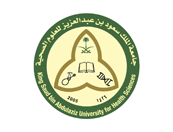Abstract
Purpose: A high-velocity low-amplitude thrust joint manipulation (HVLAT) is an intervention used by clinicians to treat spine pain. HVLAT is an entry-level skill included in the curriculum of physical therapist education programs. The objective of this study was to investigate the effects of utilizing a motor learning theory assisted teaching strategy on physical therapy student HVLAT confidence and skill acquisition as compared to a traditional lab. Method: Thirty physical therapy students were divided into two groups. One group received a traditional lab. The other group received a lab involving sequential partial task practice (SPTP) strategy in which students engaged in partial task practice over several repetitions with different partners. Student confidence and skill acquisition was determined through comparison of pretest and posttest surveys and performance on skills assessments. Results: The traditional lab and SPTP lab groups demonstrated similar response from pretest to posttest related to their HVLAT confidence. Student grades on their skills assessment measuring skill acquisition showed no significant differences between the lab groups. Discussion: The findings suggest that the SPTP lab strategy was as effective as a traditional lab structure for developing physical therapy student HVLAT confidence and skill acquisition. The majority of students in both lab groups reached a level of confidence that allowed them to feel comfortable teaching someone else these HVLAT skills. It is up to the instructors involved in delivering HVLAT content in physical therapist education programs to determine what learning activities are best suited to meet their specific objectives. © 2019 King Saud bin Abdulaziz University for Health Sciences
Recommended Citation
Washmuth, Nicholas B.; Ross, Sarah; and Bowens, Andrea N.
(2020)
"Effect of Motor Learning Theory-Assisted Instruction Versus Traditional Demonstration on Student Learning of Spinal Joint Manipulation,"
Health Professions Education: Vol. 6:
Iss.
1, Article 6.
DOI: 10.1016/j.hpe.2019.05.004
Available at:
https://hpe.researchcommons.org/journal/vol6/iss1/6



